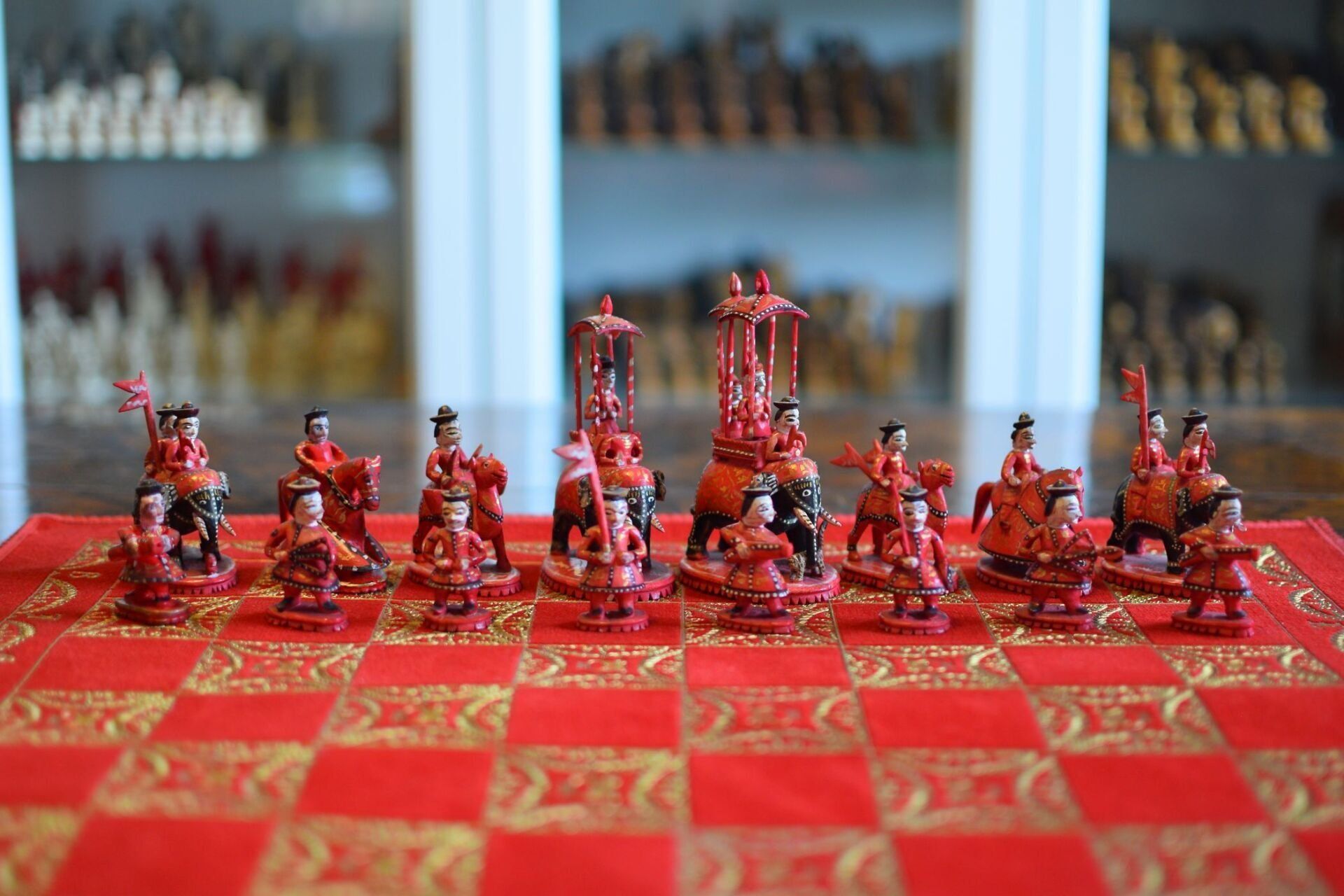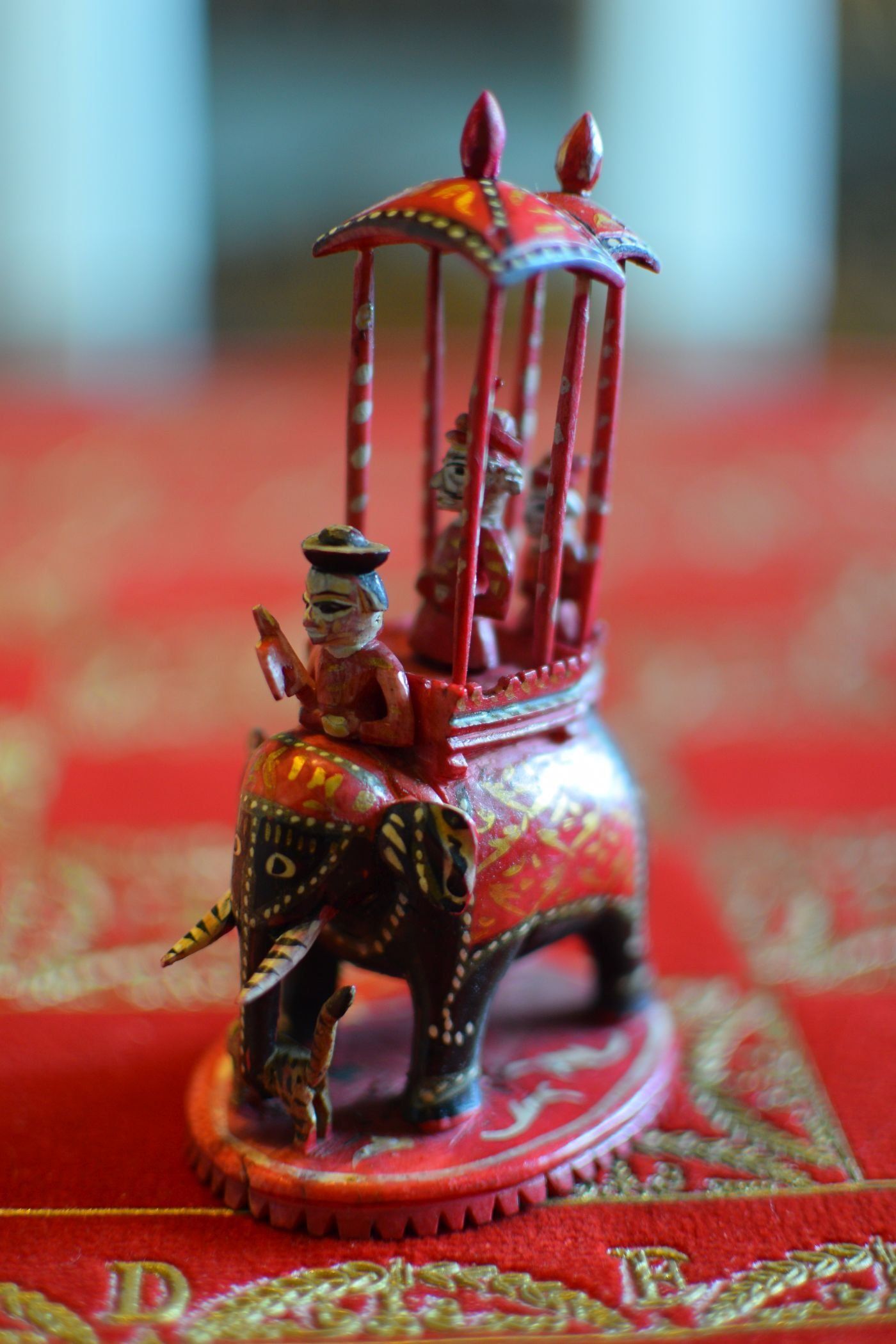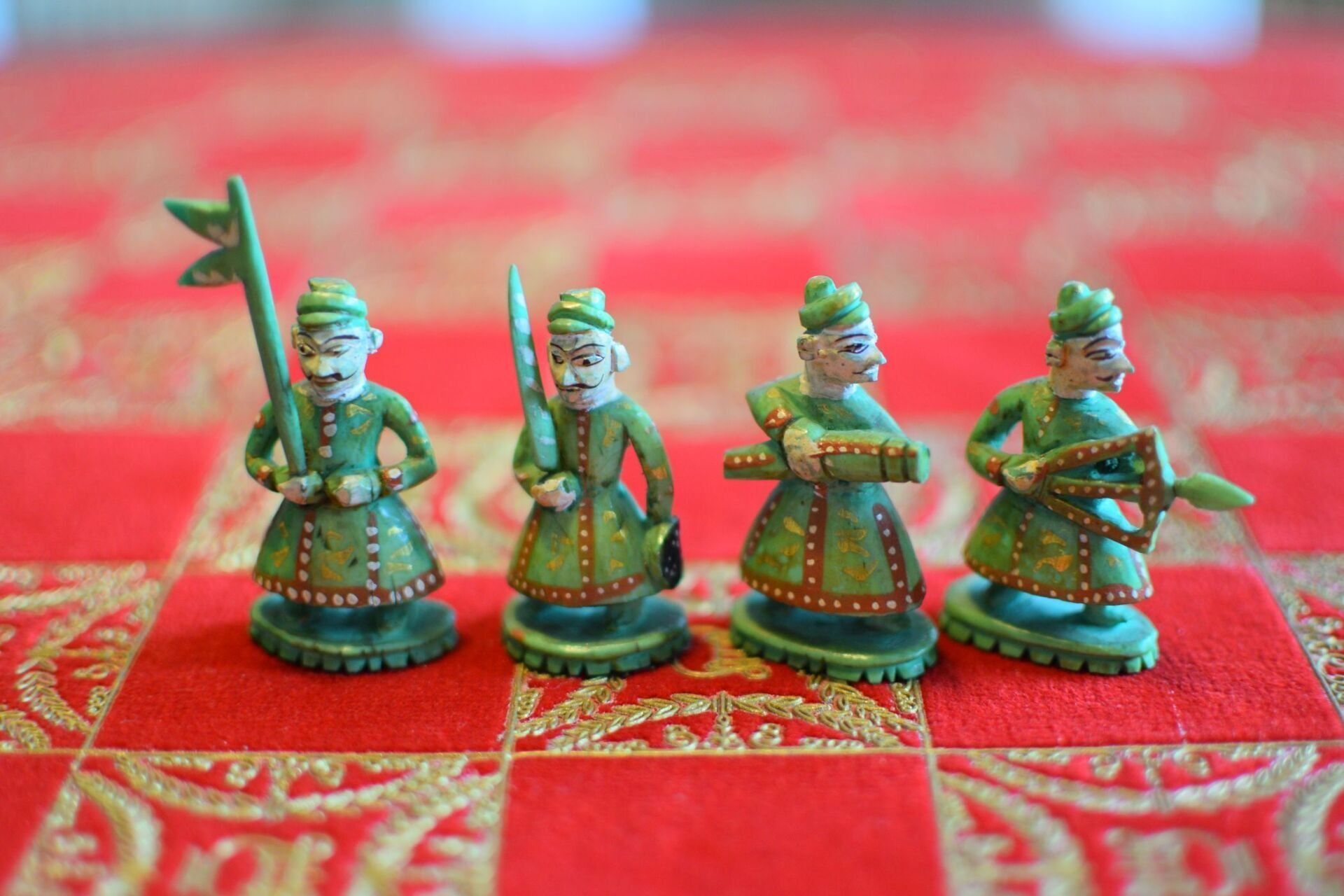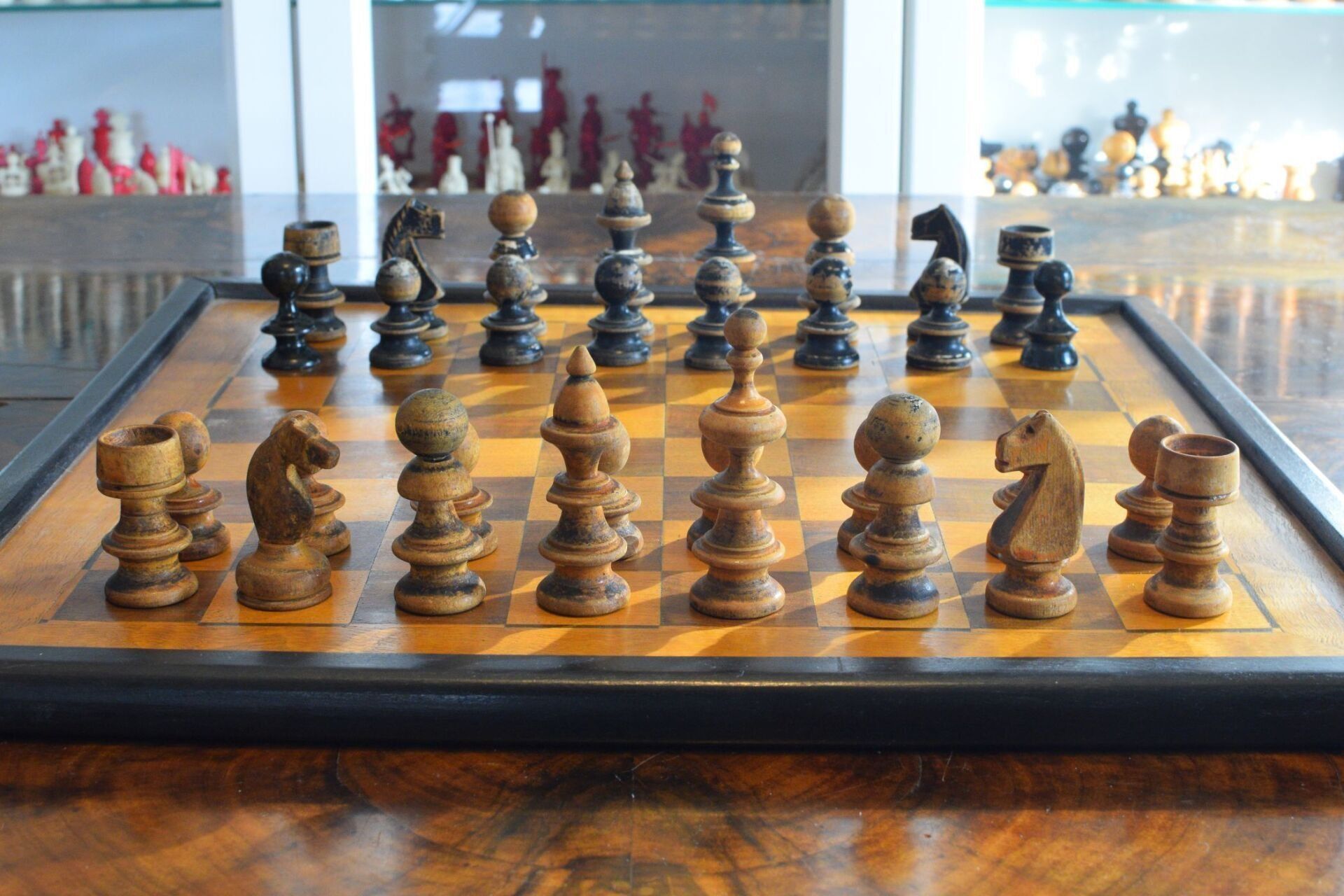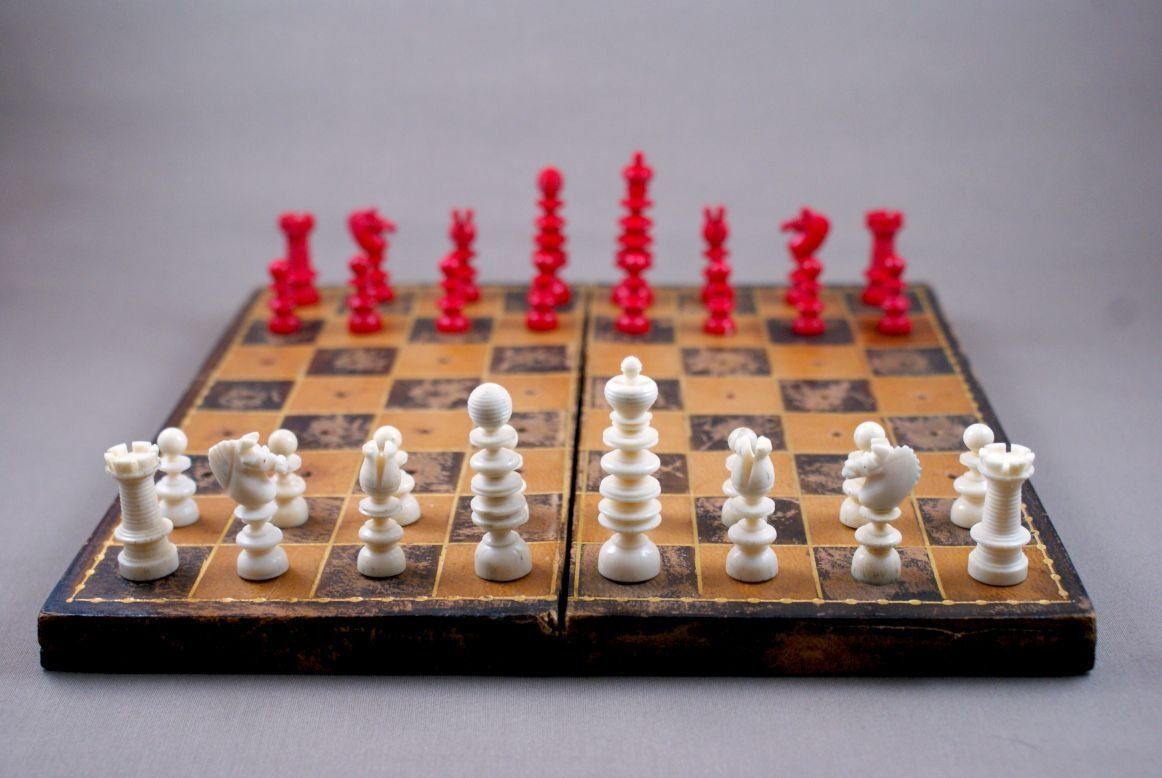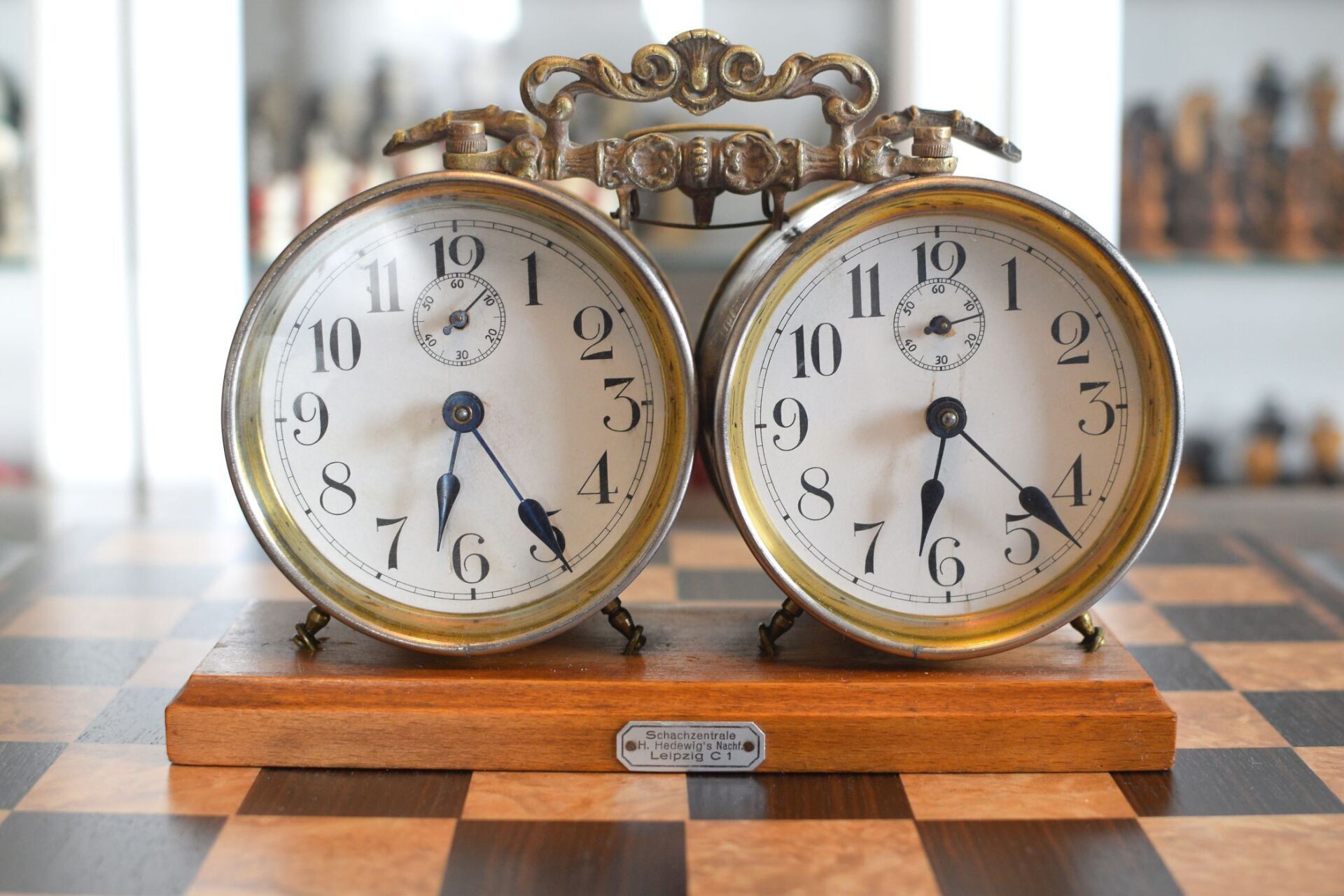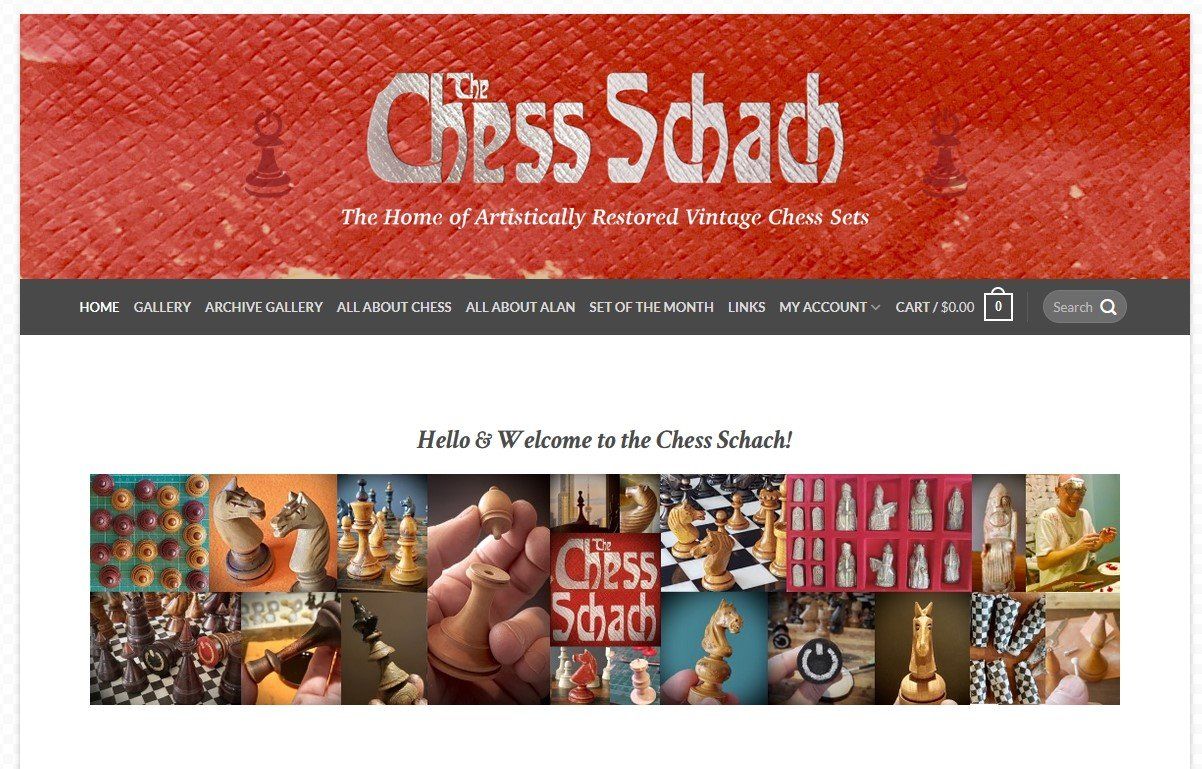Indian Polychrome Ivory Chess Set, Rajasthan, ca. 1830-1880
Indian polychrome ivory chess set from Rajasthan. The kings have a size of 10.5 cm. Sets like this were made exclusively for decoration and are not suitable for play. Some parts are damaged or missing and partly replaced, but the overall condition is quite good taking into account how delicate the pieces really are.
The pawns are wearing a jama with trousers underneath. According to Michael Mark, this detail allows a rough dating of the pieces, which in this case would most likely be mid 19th century. Mark claims that they were carved in Rajasthan for a local European market. It was only in the middle of the 19th century that there was a sufficient European presence in Rajasthan to account for the amount of work which survives. Likewise the period of popularity of these sets does not appear to have been very long. By 1886 it was reported that there was little ivory work in Rajasthan. Michael Mark therefore dates these sets roughly to the period between 1830-1880 (cf. Michael Mark, Antique Indian Chess Sets, published by Förderkreis Schach-Geschichtsforschung e.V., 1997, p.20, 40 et seq.).
The pieces are coloured in the traditional colours of Indian chess sets, which are red and green. Apart from the different colouring the outfit shows slight differences between the two armies. The green army is wearing Indian dress. The red army seems to be a mixture of Indian and European dress resembling those of sepoys, i.e. Indian infantrymen in the service of the British army. The queens are viziers and are shown together with the kings as tall elephants with howdahs and mahouts, the kings being slightly larger in size. The kings' elephant is clasping a tiger with his trunk. The rest of the pieces follow the traditional Indian setup and are shown as war elephants for the rooks, mounted horses for the knights and mounted camels for the bishops (one of each bishop pair with drums attached to the sides). The pawns show a variety of foot soldiers with different types of weapons, inter alia muskets, bows, lances and swords.
The set is shown on a red velvet chess mat with golden imprints, which is not original to the set, but is of a later date.

